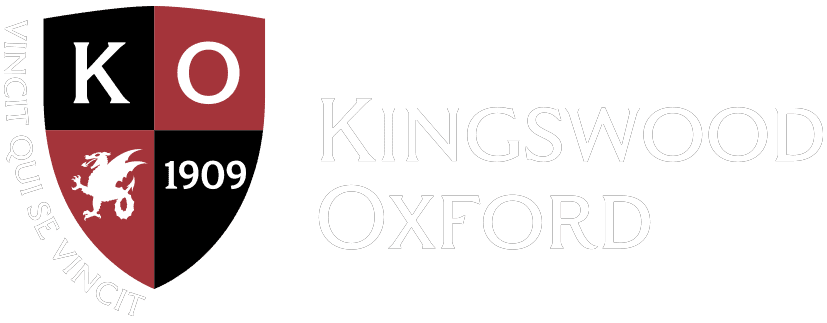October 21, 2025
Middle School Faerie House Installation – Growing Community
For five years running, Kingswood Oxford Middle School has been sprinkling a bit of magic into the autumn season — and this year was no exception. Under the guidance of Katherine Nicholson, KO students once again contributed to the Florence Griswold Museum’s Annual Faerie House Installation, a beloved Connecticut tradition that draws over 10,000 visitors each October.
This year’s theme, “Gardener’s Grove: A Growing Community,” invited artists to interpret the idea of growth and connection through miniature, nature-inspired dwellings. For Nicholson’s students, the result was a whimsical fusion of artistry, collaboration, and cultural storytelling — a series of Japanese-inspired bonsai hamlets crafted with care, imagination, and museum-worthy precision.
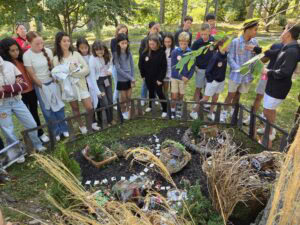
Each February, Nicholson introduces the year’s theme to her seventh-grade classes. Together, they brainstorm ideas and sketch early concepts. “We usually come up with three or four directions the students are excited about,” she explains. “Then I email the museum curator, who helps refine it and make the final selection.”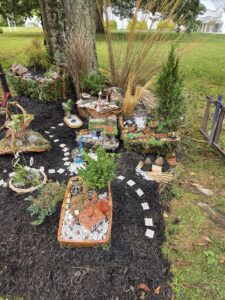
This year, the curator encouraged the class to explore bonsai trees and Japanese village design. Students researched Japanese gardens, traditional architecture, and natural materials before bringing their ideas to life. “They start with image gathering and concept sketches,” Nicholson says, “but often, the project evolves naturally. It morphs as they build — and that’s part of the magic.”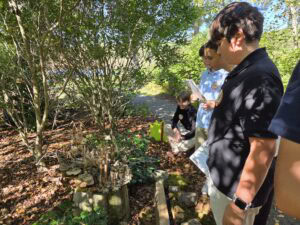 The result? A detailed miniature village complete with whitewashed houses, tiled roofs, lush moss landscapes, and even a tiny baseball field — a nod to both middle school spirit and Japan’s love of the sport. “That was the kids’ idea,” Nicholson laughs. “They said, ‘Well, the Japanese love baseball, right?’ And they’re not wrong!”
The result? A detailed miniature village complete with whitewashed houses, tiled roofs, lush moss landscapes, and even a tiny baseball field — a nod to both middle school spirit and Japan’s love of the sport. “That was the kids’ idea,” Nicholson laughs. “They said, ‘Well, the Japanese love baseball, right?’ And they’re not wrong!”
More than just a craft project, the fairy house collaboration teaches students the discipline of professional artmaking. Each piece must meet strict museum standards: 80% natural materials, durability to withstand New England weather, and above all, museum-quality craftsmanship.
“It’s a unique experience,” says Nicholson. “They’re collaborating with a curator, thinking about audience, structure, materials — and what message they want to send to the thousands of people who will see their work. It pushes them to think like real artists.”
Some students take the lead, working hours to perfect details, while others focus on specific components before handing the project off. “It’s okay if not everyone builds the same way,” Nicholson says. “Some kids love the construction process. Others love designing or adding details. But for a time, they’re all engaged — and that’s what matters.”
The installation culminates in a field trip to the Florence Griswold Museum, where students see their fairy house displayed alongside those of professional artists. “It’s an incredible moment,” Nicholson says. “They realize they’re part of something much bigger — part of a community of makers.”
That connection between imagination, craftsmanship, and community is central to Nicholson’s teaching philosophy. “For middle schoolers, it’s about the process,” she reflects. “They get to invent, to play, to think about how fairies might live. But they’re also learning about structure, patience, and collaboration. And when they see their work standing proud in a museum garden, they feel that sense of accomplishment — that we did this.”
Two eighth-grade faerie artists, Wils Haverty and Alexis Eastman, represented KO at a museum event, where they explained their house to visitors. Nicholson said, “I was impressed with their dedication and drive to head to the museum on such a rainy day!” 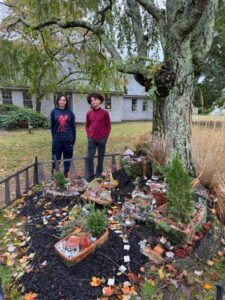
KO’s fairy houses may be small, but their impact is mighty. They represent not only the boundless creativity of KO’s young artists, but also the school’s deep belief in nurturing imagination as an essential part of education.
As Nicholson puts it: “We’re one of only a few schools invited back every year — among mostly professional artists. That says something about our students’ creativity and commitment. And it reminds them that art is more than just a project. It’s a way to connect, to grow, and to bring a little wonder into the world.”
Arts
News Main News
